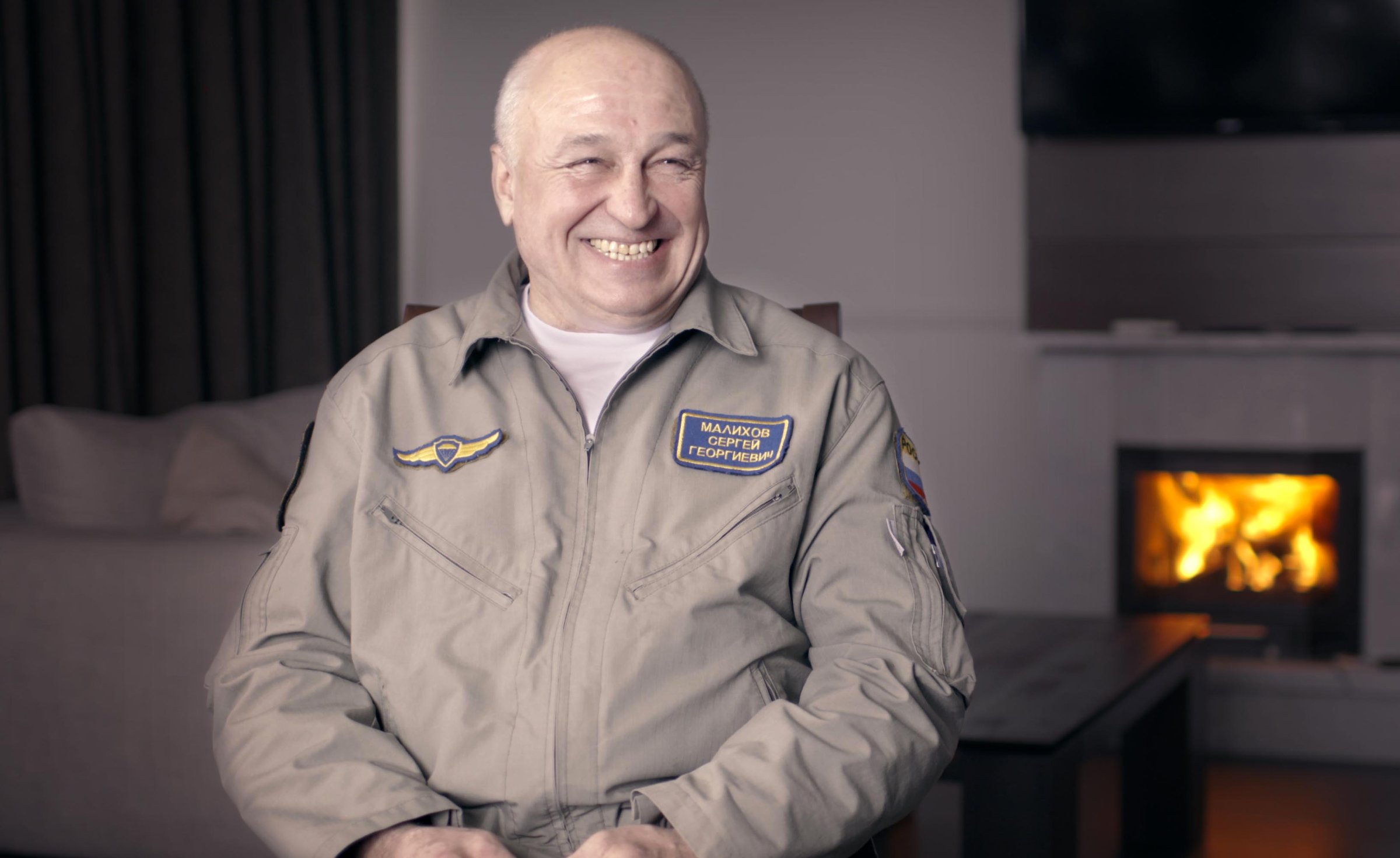
In the event you ever find yourself returning to Earth aboard a Soyuz spacecraft, there are surely a lot of faces you’ll want to see when you land. The first one you will see, however, will belong to Sergei Georgievich Malikhov. And you should be very, very glad about that.
Malikhov, 60, is head of search and rescue operations for Energia RSC—the Russian company that builds both the Soyuz spacecraft and the Soyuz rocket—and is the incongruously jolly, incongruously grandfatherly man to whom a SWAT team-like force of helicopter pilots, all-terrain vehicle drivers and rescue workers are answerable on reentry days in the Kazakh steppe. If things go wrong or if things go right, it’s all on Malikhov’s watch—and on Malikhov’s head. That will be the case again on the morning of March 3, when astronaut Scott Kelly and cosmonaut Mikhail Kornienko return from a year in space, along with Sergey Volkov, who has been up for six months.
(TIME has been following the year-long mission of cosmonaut Mikhail Kornienko and American astronaut Scott Kelly, in a video series that can be viewed here. A YEAR IN SPACE, a documentary film by TIME and PBS, premieres Wednesday, March 2 at 8 p.m. E.T. on PBS.)
Whatever Kris Kringle temperament Malikhov projects is belied by his background. For 15 years, he taught parachute jumping to cosmonauts at Russia’s Gagarin Cosmonaut Training Center, making 7,000 lifetime jumps himself—sometimes as many as ten a day. It was five years ago that he came to Energia and he has so far presided over 20 landings—none of them easy, all of them harrowing. Yet he answers all questions about the challenges of his work with a shrug and the Russian equivalent of “we do the f***ing job.” As to his success record so far?

“To my knowledge,” Malikhov said with a smile in a conversation with TIME, “we haven’t yet forgotten about a stranded astronaut.”
For this landing, he will have to work a little harder than usual keeping that perfect record intact. The steppe is deep in snow at the moment, and while temperatures have generally been above freezing in the city of Karaganda, where representatives from NASA and Roscosmos—the Russian Space agency—muster before a landing, far out in the flats the thermometer easily drops below zero, with fierce winds making the cold much worse.
Planning for a landing at any time, but especially at this time of year, is a very long process. It begins with Mission Control centers both in Houston and near Moscow sending regular updates on landing trajectories for a full 30 days before reentry. When there are still ten days to go, Malikhov and his team hit the ground in Kazakhstan, scouting all possible landing sites in a triangular footprint framed by the cities of Karaganda, Arkalyk and Zhezkazgan.
There are 13 possible landing sites, or “districts,” within that target region, along with a handful of ballistic landing sites, so-called because they are the emergency targets used if a reentry goes wrong and the ship reenters at a steeper angle than usual. Malikhov’s ground crew rules out districts that are at that moment unsuitable—too snowed-in at this time of year or perhaps flooded out entirely in the spring. All other things being equal, they will select a more northerly district over a more southerly one, since ballistic trajectories generally land farther south still, which may unavoidably cause them to cross the borders of neighboring Uzbekistan or Kyrgyzstan. For the Kelly-Kornienko-Volkov landing, a comfortably northern district 6 was chosen.
Watch Live: Astronauts Return to Earth After a Year in Space
Landing day typically sees a fleet of 10 helicopters, at least as many all terrain vehicles and still more snowmobiles converging on the target site. For this landing, that may change dramatically—and not for the better. Much of the region has been covered by low clouds and socked in by fog for the past two days and the forecast for improvement over the next four days is not good.
That means the helicopters may be grounded, the number of surface vehicles increased, and the entire exercise will become harder for rescuers and the returning crew alike. A one way trip by helicopter between one of the three nearby cities and a landing site by helicopter typically takes two hours. By ground it takes fourteen.
Whatever the makeup of the rescue fleet, the actual descent and recovery will be an exercise in real-time triangulation, with the spacecraft continually beaming down data about its trajectory as it descends and the rescue vehicles tacking this way or that in response. All that can get turned upside down when the spacecraft has fallen to an altitude of just 6.6 miles (10.7 km) and the parachutes open. At that point, the bullet-like plunge turns into an aerial drift, with a margin of error of about 9 miles (15 km) in any direction.
When the Soyuz does land and the rescuers arrive, they sometimes must roll the roughly spherical spacecraft to get its hatch in the proper position. They then sweep away any debris or loose bits of heat shield remaining from the 3,000° F (1,650° C) heat of reentry. Finally, the hatch is opened and Malikhov peers inside.
“The cosmonauts say that the smell of the air is the thing they notice most,” he says. “Inside the Soyuz, I notice the smell of the space station.”
Before reentering, astronauts and cosmonauts get to request some item they want when they hit the ground. Fresh fruit and vegetables rank high, with one cosmonaut asking for a watermelon. Three years ago, in deep snow conditions, a cosmonaut said what he really wanted to see was green grass. So Malikhov made sure someone from his team bought two meters of astroturf that were laid out in front of the spacecraft. Wish granted.
Those small grace notes are very welcome and, especially to Kelly and Kornienko who have been gone for a year, will be very important. But everyone involved in any landing knows they’re luxuries too. Before any happy welcoming rituals can be performed, Malikhov and his rescue crew must once again stick the landing.
More Must-Reads From TIME
- The 100 Most Influential People of 2024
- The Revolution of Yulia Navalnaya
- 6 Compliments That Land Every Time
- What's the Deal With the Bitcoin Halving?
- If You're Dating Right Now , You're Brave: Column
- The AI That Could Heal a Divided Internet
- Fallout Is a Brilliant Model for the Future of Video Game Adaptations
- Want Weekly Recs on What to Watch, Read, and More? Sign Up for Worth Your Time
Write to Jeffrey Kluger/ Karaganda, Kazakhstan at jeffrey.kluger@time.com